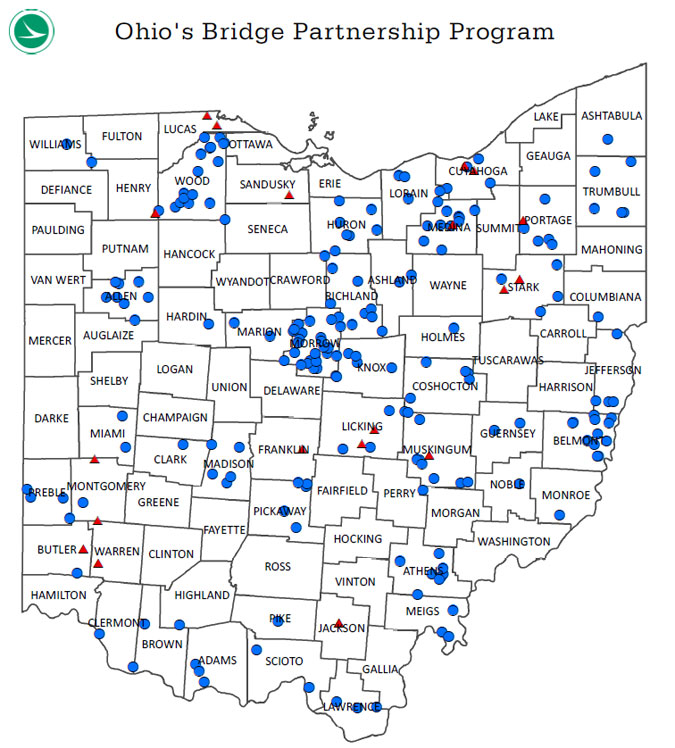
| Name of Agency | Ohio Department of Transportation (ODOT) |
|---|---|
| Location | Statewide |
| Project Delivery Method | Design-Build (D-B) |
| Procurement Method | Low Bid (Contractors have to be prequalified) |
| Total Project Cost | $110 million in the first 3 years ($100 million for counties; $10 million for cities) Funding has continued at $5 million per year through 2019. |
| Funding Source | 100% federally funded with GARVEE bonds and toll credits; no local match. ODOT will pay back GARVEE bonds over 12 years. |
| Construction Schedule | Thirty bridges completed in first 8 months; 200 bridges in the first 3 years. Road closure duration assigned at each location, typically 45-60 days. |
| Project Description | In October 2013, Governor Kasich announce that Ohio would invest $110 million to repair or replace more than 200 county- and city-owned bridges over the next 3 years. The program was 100% federally funded. ODOT used GARVEE bonds to pay for 80% of the program, and the 20% match was covered by using toll credits, eliminating any local match. ODOT worked collaboratively with the Federal Highway Administration (FHWA) to sign a memorandum of understanding (MOU), which allowed them to bundle the entire program for financing, and then break the projects out into smaller bundles of 2-3 bridges per contract. The first 200 bridges were let as D-B contracts. The goal was to replace as many local bridges in poor condition as they could with the $110-million budget and 3-year time frame. The expectation was to deliver safe, quality bridges with a no-nonsense approach to project delivery and construction. To maximize the efficiency of the program, most of the locations were bridge replacements completed under detours. Approach road work was minimized. Local preferences were accommodated when necessary and warranted, but in general, these were work horse bridges with simple construction. Cost savings allowed ODOT to complete 210 bridges with the original $110 million, 10 more than expected. The program has continued due to its success at a rate of $5 million per year. Current projects are being delivered with the design-bid-build (D-B-B) methodology, with the local public agencies providing the preliminary engineering. |
| Project Website | https://www.dot.state.oh.us/Divisions/ConstructionMgt/design-build/Docs/2016projects.pdf http://ceao.org/aws/CEAO/asset_manager/get_file/120760?ver=9 |
| Program Goals |
To quickly reduce the percentage of bridges in poor condition on the local system. |
|---|---|
| Bridge Selection Criteria |
|
| Delivery and Procurement Method |
D-B, Low Bid (Contractors have to be prequalified.) |
| Funding Sources, Financing Strategy |
|
| Environmental, Right-of-Way, and Utility Considerations |
|
| Risks |
Projects were D-B. ODOT responsible for proper scope in the request for proposal (RFP). Contractors were responsible for design and construction. The top risk was utility coordination, which was shared. The contractor was responsible for utility coordination, but ODOT absorbed the hit if the utility company failed to perform within the agreed upon time constraints. |
| Owner Management/Quality Assurance |
|
| Stakeholder Communication |
ODOT worked closely with the Ohio General Assembly and the County Engineers Association of Ohio to advance the program. They also worked with the individual local public agencies to set the scope, schedule, and budget for each location. |